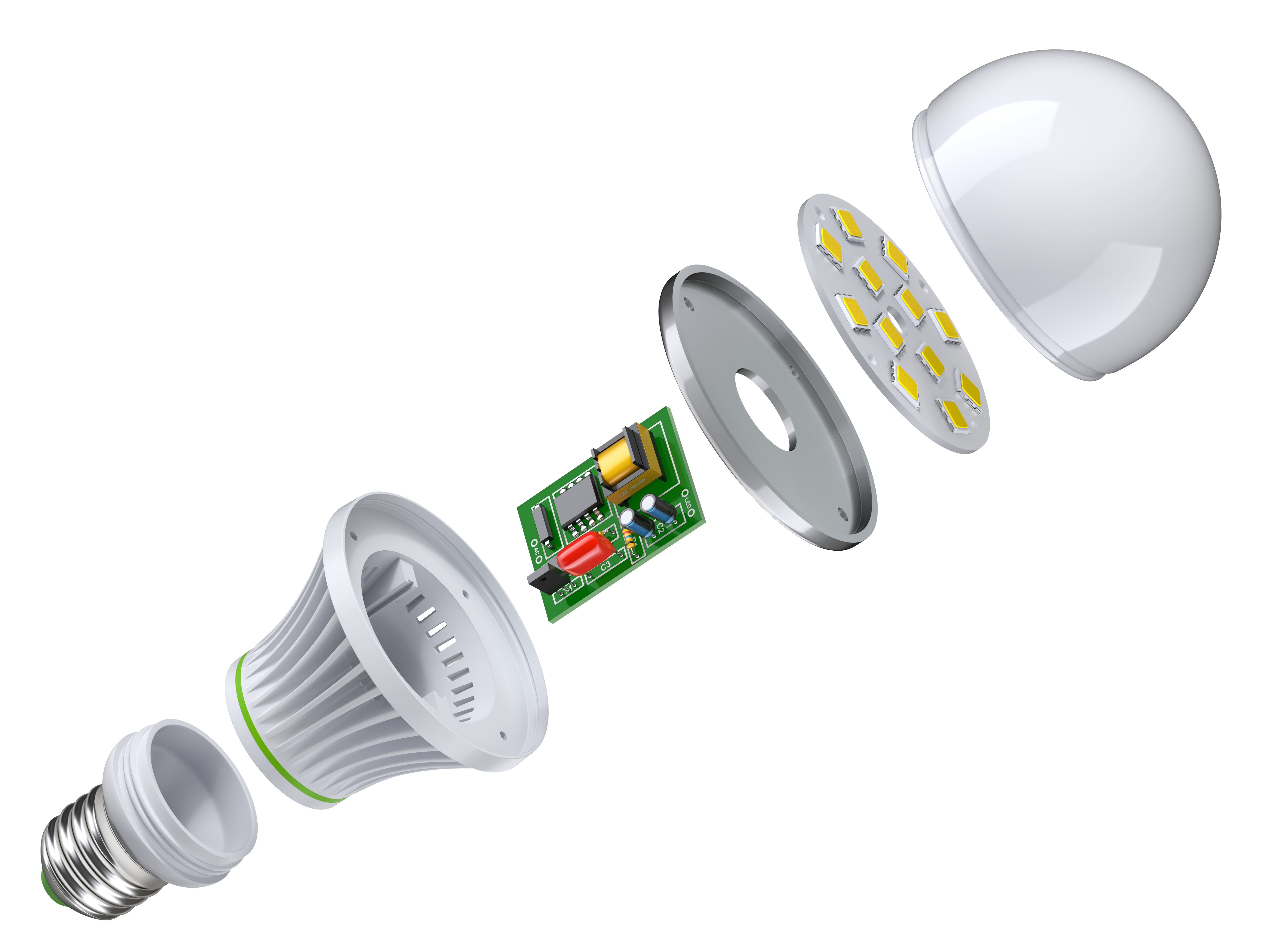

- Contributions by industrial experts with engineers in mind
- Focused on specialty-chemical material applications and selection
Knowledge Center
Thermal Management Buyer's Guide
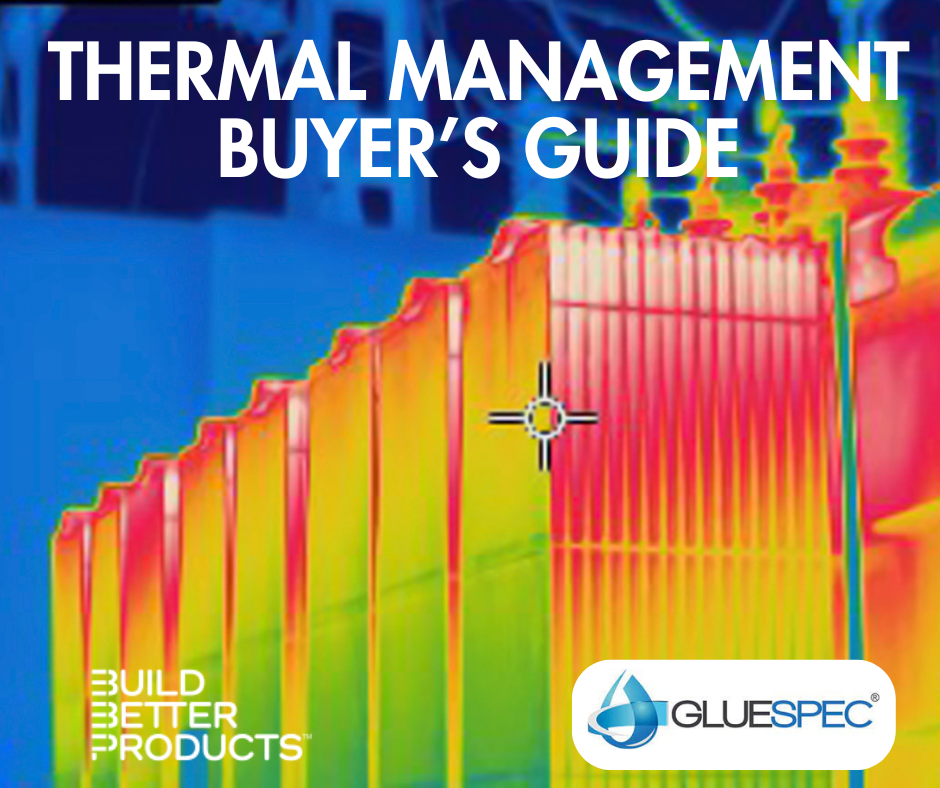
Listen to This Article
Design engineers use thermal management materials to improve the thermal performance of products. These materials are not a substitute for strong designs or the use of other cooling strategies. Yet thermal management materials are an essential part of safe, reliable, and effective products.
Gluespec is the place to find thermal adhesives, thermal interface materials, and thermally conductive encapsulants. The materials and manufacturers in our database are not limited to specific suppliers, and data is quality-checked and updated as needed whenever new data sheets or product specifications are released.
In this Thermal Management Buyers Guide, we explain what you need to know when searching for and selecting these products. First, we’ll cover some key concepts and their relationship with product selection.
Table of Contents
What is Thermal Conductivity (TC)
TC Values and Material Replacements
TC Values and Temperature Ranges
What are Heat Spreaders and Heat Sinks
What are Thermal Interface Materials?
What are Thermal Encapsulants?
Finding Thermal Management Materials
What is Thermal Management?
Thermal management is about controlling the temperature of components, systems, and devices to ensure that they operate safely, reliably, and efficiently. It’s especially important in the electronics, manufacturing, automotive, and aerospace industries because excessive heat can reduce performance, cause malfunctions, or result in premature failure.
Thermal management starts with recognizing where and how much heat is produced, such as from processors, power supplies, motors, or batteries. Heat naturally flows from hotter to colder regions, but passive cooling usually is not enough. That’s why design engineers use thermal management materials to promote heat transfers and help dissipate heat into the environment.
The size of area that you’re trying to cool, the thickness of the thermal management material, and the temperature change are also key considerations. Of course, there could also be issues in your design, such as the location of a heat source. Qualifying a thermal management material for an application is the engineer’s responsibility, but this Thermal Management Buyer’s Guide can help.
What is Heat Transfer?
Heat transfer is the exchange of thermal energy between physical objects. According to the second law of thermodynamics, heat naturally moves from a hotter object or area to a colder one. Consider an example from the internal combustion engine. If the temperature of a piston is 300°C and the temperature of a cylinder is 100°C, then heat from the piston flows to the cylinder. A related concept, the heat transfer path, describes the specific route through which heat energy moves.
Methods of Heat Transfer
There are three methods of heat transfer.
- Conduction: Heat is transferred through contact with a solid material
- Radiation: Heat travels through electromagnetic waves
- Convection: Heat is transferred via moving air
In general, most heat transfer occurs through conduction.
Heat Transfer in Electronics
The following diagram shows heat transfer paths and methods of transfer from a cylindrical capacitor that’s mounted to a printed circuit board (PCB). Through conduction, heat travels from the capacitor to the PCB. Yet heat is also radiated from the capacitor into the surrounding air. Convection, typically with a fan or blower, moves airborne heat to the immediate surroundings.
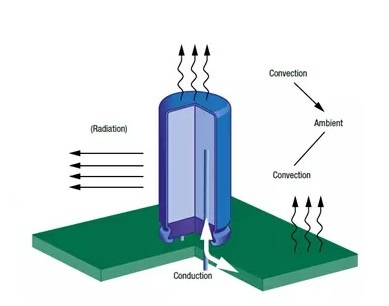
Image Credit: RECOM
What is Thermal Conductivity (TC)?
Thermal conductivity (TC) is a measure of the ability to transfer heat. It’s expressed in watts per meter Kelvin and abbreviated as W/mK. Because air has a relatively low TC of 0.01 W/mK, it’s not the most efficient way to move heat. Polymers like the ones used in some PCB substrates also have a low TC. However, metals and ceramics have a relatively high thermal conductivity. Diamond is the world’s most thermally conductive substance and has TC of 2000 W/mK.
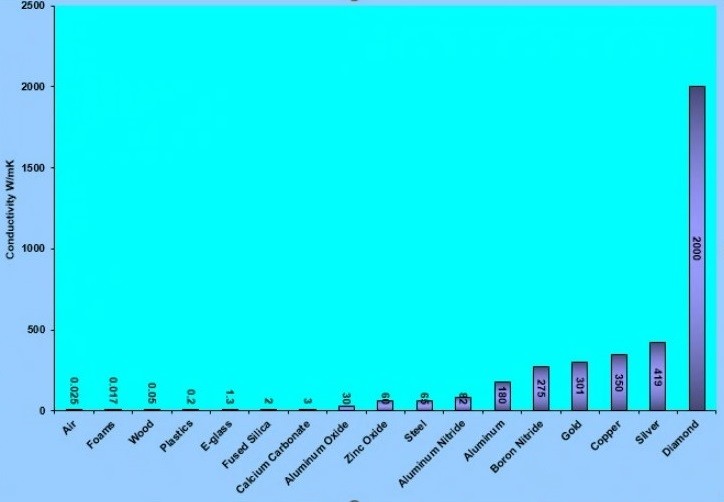
Thermal conductivities of various materials
TC Values and Material Replacements
If you’re replacing a thermal management material, there’s more to consider than just matching the existing TC specification. Depending on when the product that you’re replacing was introduced, TC testing may have been performed with equipment that’s now out-of-date. Inaccurate test data isn’t the only risk. Off-the-shelf materials aren’t usually tested for customer-specific applications. Therefore, what’s on a data sheet doesn’t guarantee a product’s performance with your design.
TC Values and Temperature Ranges
It’s also important to consider that thermal conductivity decreases as temperature increases. In other words, the TC of a material falls as the temperature rises. If your application has temperatures that range from 25°C to 125°C, for example, a thermally conductive material will move more heat at 25°C and less heat at 125°C.
TC Testing and Test Methods
If you’re wondering whether a product is the right choice, consider using a testing service like ResinLab. The company uses a Hot Disk® TPS 2500S analyzer to measure thermal properties, including thermal conductivity, with high accuracy and reproducibility. In a typical test configuration, two identical specimens are tested, prepared as disc-shaped pucks of material, and compressed. A thin-film sensor is used for measurements.
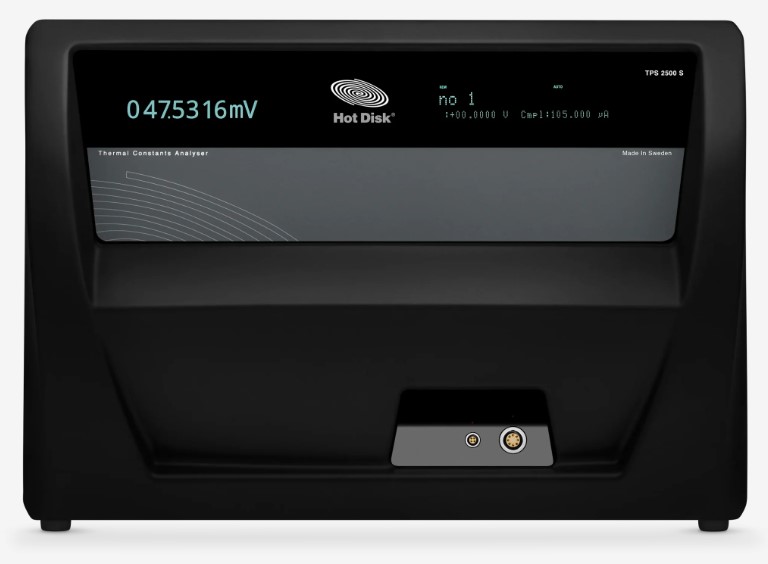
The TPS 2500 S has a thermal conductivity range of 0.005 to 1800 W/mK. Image Credit: Hot Disk
Thermally Conductive Fillers
Many of the thermally conductive materials you’ll find on Gluespec consist of a polymer and specialized filler such as a metal-containing compound. For example, epoxies normally have low thermal conductivity. With the addition of 70% aluminum oxide, however, epoxy systems can have a TC of 1.4 W/mk. Products that are 80% diamond-filled can have a TC of 4 W/mk but are considerably more expensive.
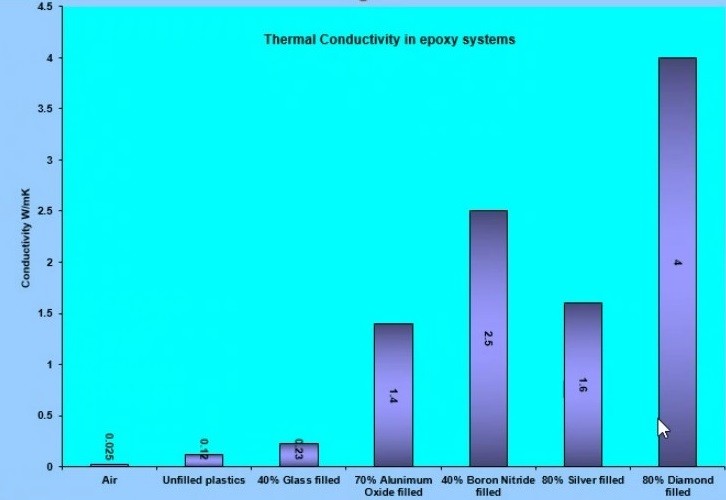
Thermal conductivity in epoxy systems varies by filler material and the percent fill.
The differences between fillers like 70% aluminum oxide and 80% diamond might seem a lot, but they’re small when compared to the thermal conductivities of the materials used in heat spreaders and heat sinks. Both types of devices are used widely in electronics, and in conjunction with the type of thermal management materials you’ll find on Gluespec.
What are Heat Spreaders and Heat Sinks?
Heat spreaders distribute heat evenly across large surface areas. They’re typically made of graphite (800 W/mK and up), aluminum (237 W/Mk), or other materials with relatively high thermal conductivities. By avoiding localized hot spots, heat spreaders also make it easier for other thermal management products or devices to work more efficiently. In turn, heat spreaders help to prevent damage to sensitive components.
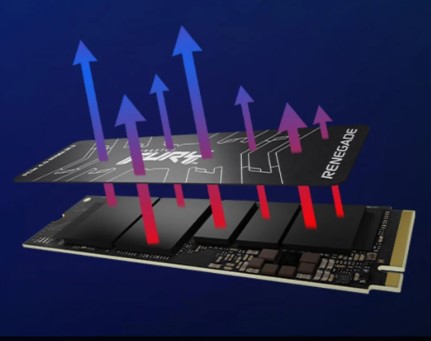
Graphene-Aluminum heat spreader. Image Credit: Reddit
Heat sinks absorb heat from a source and help move it to a cooler area where it can be dissipated. In electronics, a heat source such as a CPU typically sits atop a heat sink made of a metal with a high thermal conductivity. Heat moves into a heat sink via conduction, the diffusion of thermal energy between materials that are in contact with each other. To fill the air gaps between heat sources and heat sinks, thermal management materials are used.
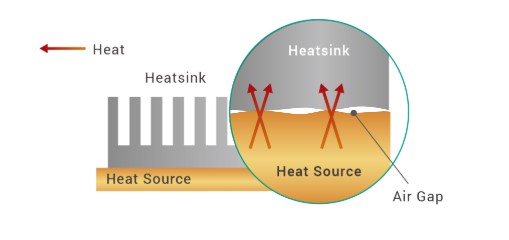
Image Credit: Tacia
What is Heat Dissipation?
Heat dissipation is the process of moving heat away from its source and into the surrounding area. A related concept, the heat dissipation path, describes the specific route that heat takes to move from a source to its environment. Along with unpowered devices like heat sinks and heat spreaders, powered devices such as fans, pumps, or thermoelectric coolers help move heat. Because air is a good insulator and has a high thermal resistance, powered devices like fans help physically move airborne heat.
What is Thermal Resistance?
Thermal resistance is the inverse of thermal conductivity. In other words, it’s a measure of the ability to resist the flow of heat. Because the thermal resistance of air is relatively high, thermally conductive materials are used to fill air gaps between heat sources and heat sinks. On data sheets, thermal resistance is given in kelvins per watt (K/W) or degrees Celsius per watt (°C/W).
What is Temperature Rating?
Temperature rating is the maximum temperature that a material can withstand under specific conditions, often for shorter durations. It can be higher than the continuous operating temperature, which is the maximum temperature that a material can withstand over an extended period without degrading significantly or losing its intended properties.
On data sheets, temperature rating is a specification to consider with care because some manufacturers do not list a test method. Underwriter’s Laboratories’ (UL) Relative Thermal Index (RTI) is useful because it measures a material’s ability to withstand high temperatures over a long period of time while also testing the material’s properties at different temperatures.
Remember that the thermal conductivity of a material decreases as temperature increases. This is especially important if your application has a range of operating temperatures rather than a single continuous operating temperature. When in doubt, testing a thermal management material can provide the results you need for product qualification.
What is Shelf Life?
Shelf life is the length of time that a material can meet its original specifications while stored in a certain container under certain conditions. In general, a thermal management material that is stored properly can have a long shelf life; however, exposure to high or low temperatures, moisture, humidity, sunlight, or ozone can all reduce shelf life. With liquid products, there’s a risk that thermally conductive fillers could settle and render a product unusable. Specialty packaging may also change shelf life.
Thermal Adhesives
Thermal adhesives bond heat-generating components to heat sinks. They eliminate the need for clips, screws, or rivets and support smaller, lighter products. Most thermal adhesives are liquids, but tapes and films are also available.
- Thermal liquid adhesives can fill larger gaps and irregular surfaces. They also conform to intricate geometries, corners, and tight spaces.
- Thermal film adhesives have controlled and uniform thickness. They don’t require mixing like two-part liquid systems and are less messy.
- Thermal tape adhesives are available in pressure-sensitive adhesive (PSA) formulations for easy peel-and-stick bonding.
Gluespec’s Thermal Adhesives Guide provides additional information, including technical specs and videos. Here are some examples of the types of thermal adhesives you’ll find on Gluespec.
 |
DOWSIL® 1-4173 is a one-part liquid silicone adhesive with an aluminum oxide filler. It’s gray in color, supports primer-less adhesion, and has a TC of 1.80 W/mK.
|
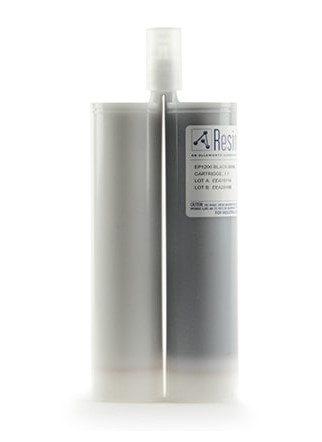 |
EP1200 Black from Resin Lab is a two-part liquid epoxy adhesive with an aluminum oxide filler. It’s black in color, supports primer-less adhesion, and has a TC of 1.04 W/mK.
|
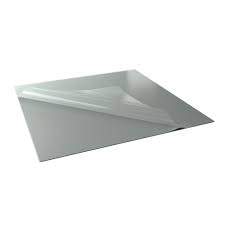 |
Loctite Ablestick 5025E from Henkel is an unsupported epoxy adhesive film. This silver-filled product has a TC of 6.50 W/mK.
|
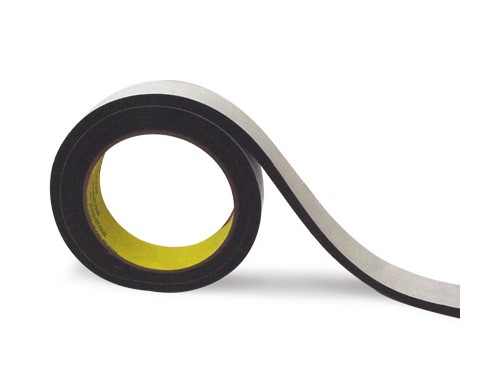 |
3M Single-Coated Vinyl Foam Tape 4714 has a pressure-sensitive acrylic adhesive on one side. It’s black in color and has a TC of 0.04 W/mK. |
Resources
Here are some additional resources about thermal adhesives.
- Glass Beads for Adhesives Q&A
- Adhesive Selection for Semiconductor Packaging Q&A
- Thermal Adhesives Guide
Bond Line Thickness
With thermal adhesives, design engineers must consider bond line thickness. As a rule, thinner bond lines dissipate heat more effectively than thicker ones. In general, the minimum recommended bond line thickness for an adhesive is 5 mil; however, testing may be performed over a range of 5 and 20 mils. In addition to achieving the proper bond line thickness, it’s important to maintain this thickness across the entire bond line for effective heat transfer.
To ensure a consistent stand-off distance, some thermal adhesives contain glass beads or microspheres. Loctite TCP 8175M1 is an example. This thermally conductive adhesive contains a 1% 175 µm spacer for thin, consistent bond lines and has a TC of 1.2 M. Design engineers can buy thermal adhesives that already contain glass beads, or they can ask a custom packager like KitPackers to add them. Alternately, customers can buy and add glass beads themselves.
What are Thermal Interface Materials?
Thermal interface materials (TIMs) fill the gaps between mating surfaces such as a heat source and a heat sink. They include greases, gap fillers, gap pads, phase change materials, and compounds. Unlike thermal adhesives, TIMs generally do not bond substrates together. The exception is gap pads, which sometimes feature a pressure-sensitive adhesive.
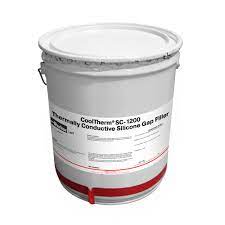 |
Cooltherm SC-1200 Thermally Conductive Silicone Gap Filler from Parker Lord is a two-part, silicone-based paste with a TC of 2.0 W/mk. |
 |
TP-1560 Thermally Conductive Pad from Resin Designs is a one-part, silicone-based gel with a TC of 1.10 W/mK. |
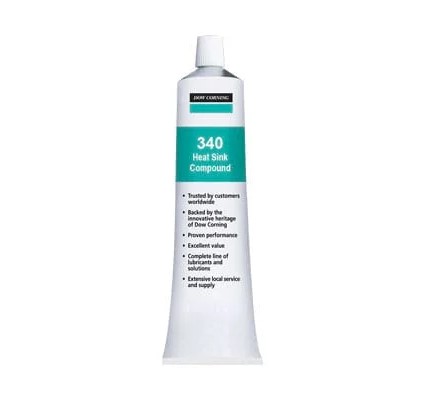 |
DOWSIL® 340 Heat Sink Compound from Dow is a silicone grease with a zinc oxide filler. It has a TC of 0.66 W/mK. |
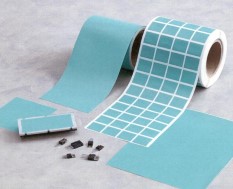 |
Hi-Flow 625 from Henkel is a film-reinforced phase change material that changes state to provide temporary cooling. It has a TC of 0.50 W/mK. |
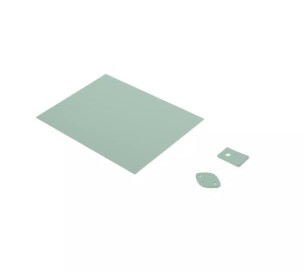 |
Bergquist Gap Pad TGP 5000 from Henkel is a one-part product that has naturally inherent tack for reduced interfacial thermal resistance. It has a TC of 5.00 W/mK. |
Explore All Thermal Interface Materials
Resources
Here are some additional resources about thermal interface materials.
- Designing the Proper Thermal Management System into Your High Power Electronics
- Meter Mixing
- Lubricants In Depth: Greases
What are Thermally Conductive Encapsulants?
Thermal encapsulants are poured over printed circuit boards and their components and then cured. They provide environmental protection not only against heat, but also against moisture, dust, shock, vibration, electrical discharges, and other hazards that can cause electronics to fail.
 |
Cooltherm SC-320 from Parker Lord is two-part silicone encapsulant with low linear shrinkage. It has a TC of 3.00 W/mK.
|
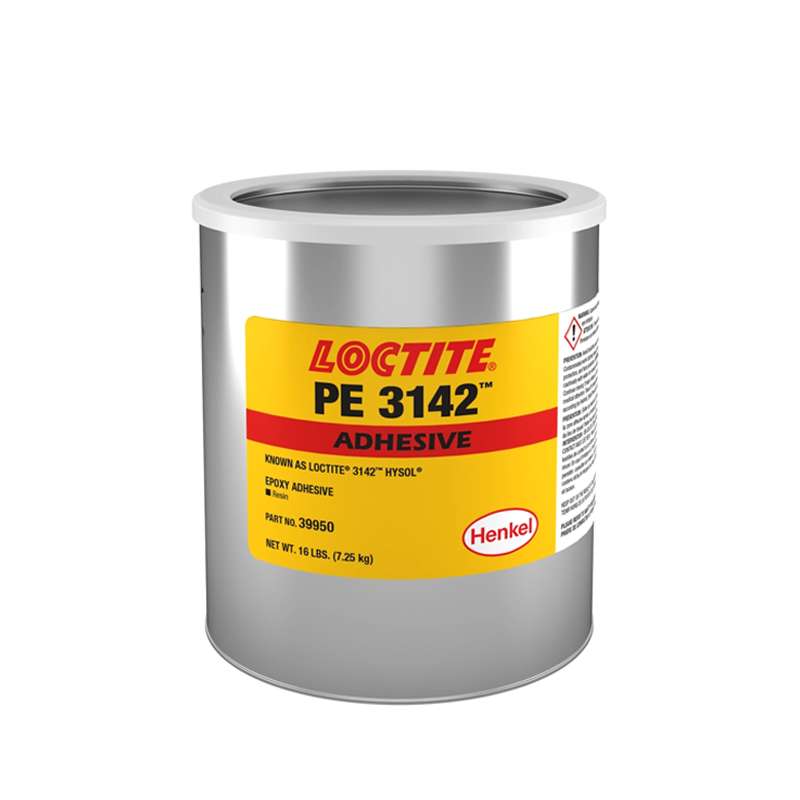 |
Loctite PE 3142 / PE 3165 from Henkel is a two-part epoxy gel that’s black in color. It has a TC of 1.13 W/mK. |
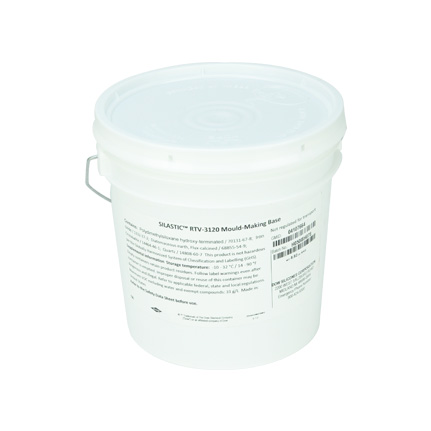 |
ThermoSink 35-1 from Resin Designs is a two-part, flowable silicone that cures at room temperature. It has a TC of greater than 3.40 W/mK. |
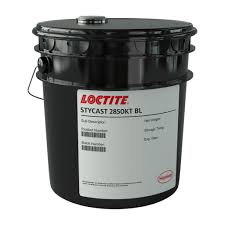 |
Loctite Stycast 2850 MT w/ Cat 24 LV from Henkel is a liquid epoxy encapsulant with a TC as high as 1.60 W/mK. |
Explore All Thermal Encapsulants
Resources
Here are some additional resources about thermal encapsulants.
- Encapsulation of Microelectronics Assemblies for Harsh Environments
- Effects of Temperature Cycling on Epoxy Resins
- Potting and Encapsulating Materials Guide
Finding Thermal Management Materials
Gluespec’s comprehensive and quality-tested database of 35,000 adhesives includes the thermal management materials that design engineers need. The materials and manufacturers in our database are not limited to specific suppliers, and data is quality-checked and updated as needed whenever new data sheets or product specifications are released.
If you need deep data thermal management materials, you’ll find what you’re looking for in our proprietary database. Along with technical data and key specifications, you’ll find best practices and comparable materials. Design engineers can also view test method information on dozens of material properties and data points.
Finally, Gluespec’s Advanced Search provides the tools you need to conduct deep filtering among all material properties. The result is a customized grid that contains materials and data points that are specific to your project. Save custom grids for quick access and share them, along with this Thermal Management Buyer’s Guide, with your colleagues.



